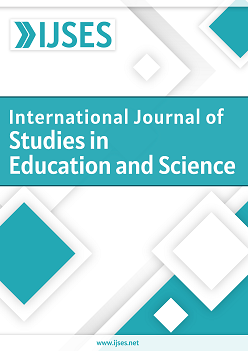Makerspace and the 5 C’s of Learning: Constructing, Collaborating, Communicating, Critically-Thinking, and Creatively-Thinking
DOI:
https://doi.org/10.46328/ijses.135Keywords:
Makerspace, STEAM, Constructivism, Critical-thinking, Experiential learningAbstract
From early childhood settings to higher education, makerspaces provide opportunities for learners of all ages and backgrounds to engage in hands-on learning for designing and creating to solve problems. This study explores the advent of the makerspace movement and the benefits and future implications for Science, Technology, Engineering, Art, and Mathematics (STEAM) learning for interweaving makers philosophy. As our global society nears the close of the first quarter of the twenty-first century, the skills developed, refined, and improved through makers learning readies all learners with twenty-second century preparedness. The makerspace movement is innately centered on constructivism. Constructivism provides learners with both social discourse and the transmission of experiential knowledge for constructing understanding. This study examines the effect of constructivism and the roles of communicating and collaborating during makers discovery for motivating students and makerspace influence on social skills development. The prosocial benefits of makerspaces also serve as catalysts for inspiring personalized learning and group learning dynamics between cooperating students. Moreover, makerspaces incorporate elements of computing, engineering, and the arts in the aesthetics of student work products. When students design and construct, they employ critical-thinking skills for creating original works of art and science. The development of critical-thinking skills and creativity in learners are life skills students employ throughout a lifetime of learning. This study explores a spectrum of makerspace tools, ranging from cardboard and Legos to laser cutters and CNC machines for use by learners in early childhood centers through university settings. This study also provides recommendations for future makerspace utilization as both a course offering for students as well as strategies for embedding makers philosophy through interdisciplinary and transdisciplinary teaching and learning athwart a spectrum of STEAM and content areas.References
Dignam, C. (2025). Makerspace and the 5 C’s of learning: Constructing, collaborating, communicating, critically-thinking, and creatively-thinking . International Journal of Studies in Education and Science (IJSES), 6(1), 104-127. https://doi.org/10.46328/ijses.135
Downloads
Published
Issue
Section
License
Copyright (c) 2025 International Journal of Studies in Education and Science

This work is licensed under a Creative Commons Attribution-NonCommercial-ShareAlike 4.0 International License.
Articles may be used for research, teaching, and private study purposes. Authors alone are responsible for the contents of their articles. The journal owns the copyright of the articles. The publisher shall not be liable for any loss, actions, claims, proceedings, demand, or costs or damages whatsoever or howsoever caused arising directly or indirectly in connection with or arising out of the use of the research material.
The author(s) of a manuscript agree that if the manuscript is accepted for publication in the International Journal of Studies in Education and Science (IJSES), the published article will be copyrighted using a Creative Commons “Attribution 4.0 International” license. This license allows others to freely copy, distribute, and display the copyrighted work, and derivative works based upon it, under certain specified conditions.
Authors are responsible for obtaining written permission to include any images or artwork for which they do not hold copyright in their articles, or to adapt any such images or artwork for inclusion in their articles. The copyright holder must be made explicitly aware that the image(s) or artwork will be made freely available online as part of the article under a Creative Commons “Attribution 4.0 International” license.

This work is licensed under a Creative Commons Attribution-NonCommercial-ShareAlike 4.0 International License.





